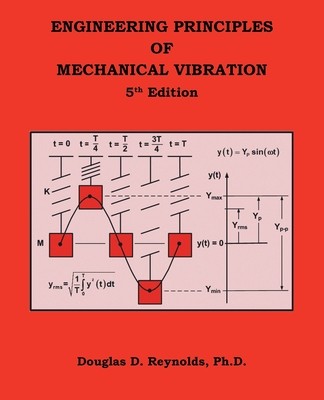
- We will send in 10–14 business days.
- Author: Douglas D Reynolds
- Publisher: Trafford Publishing
- ISBN-10: 1490796568
- ISBN-13: 9781490796567
- Format: 19.1 x 23.5 x 2.5 cm, minkšti viršeliai
- Language: English
- SAVE -10% with code: EXTRA
Engineering Principles of Mechanical Vibration (e-book) (used book) | bookbook.eu
Reviews
Description
Engineering Principles of Mechanical Vibration, 5th Edition was written for use in introductory senior level undergraduate and intermediate level graduate mechanical vibration courses. Students who use this textbook should have an understanding of rigid body dynamics and ordinary differential equations. Mechanical vibration concepts presented in this textbook can be used to address real world vibration problems. Ordinary differential equations are developed and solution methods are presented that describe the motions of vibration systems comprised of mass, spring and damping elements. Partial differential equations are developed and solution methods are presented that describe the motions of vibration systems comprised of strings, beams, membranes and thin plates. The solution methods address vibration systems that are excited by system initial conditions and by periodic, complex periodic, non-periodic and random vibration signals. Information is presented that addresses vibration transducers and measurement instrumentation, the digital processing of vibration signals, and analytical and experimental modal analyses. This textbook presents design criteria and concepts and related system components used to develop vibration isolation systems for mechanical equipment in buildings.
EXTRA 10 % discount with code: EXTRA
The promotion ends in 21d.21:30:53
The discount code is valid when purchasing from 10 €. Discounts do not stack.
- Author: Douglas D Reynolds
- Publisher: Trafford Publishing
- ISBN-10: 1490796568
- ISBN-13: 9781490796567
- Format: 19.1 x 23.5 x 2.5 cm, minkšti viršeliai
- Language: English English
Engineering Principles of Mechanical Vibration, 5th Edition was written for use in introductory senior level undergraduate and intermediate level graduate mechanical vibration courses. Students who use this textbook should have an understanding of rigid body dynamics and ordinary differential equations. Mechanical vibration concepts presented in this textbook can be used to address real world vibration problems. Ordinary differential equations are developed and solution methods are presented that describe the motions of vibration systems comprised of mass, spring and damping elements. Partial differential equations are developed and solution methods are presented that describe the motions of vibration systems comprised of strings, beams, membranes and thin plates. The solution methods address vibration systems that are excited by system initial conditions and by periodic, complex periodic, non-periodic and random vibration signals. Information is presented that addresses vibration transducers and measurement instrumentation, the digital processing of vibration signals, and analytical and experimental modal analyses. This textbook presents design criteria and concepts and related system components used to develop vibration isolation systems for mechanical equipment in buildings.


Reviews